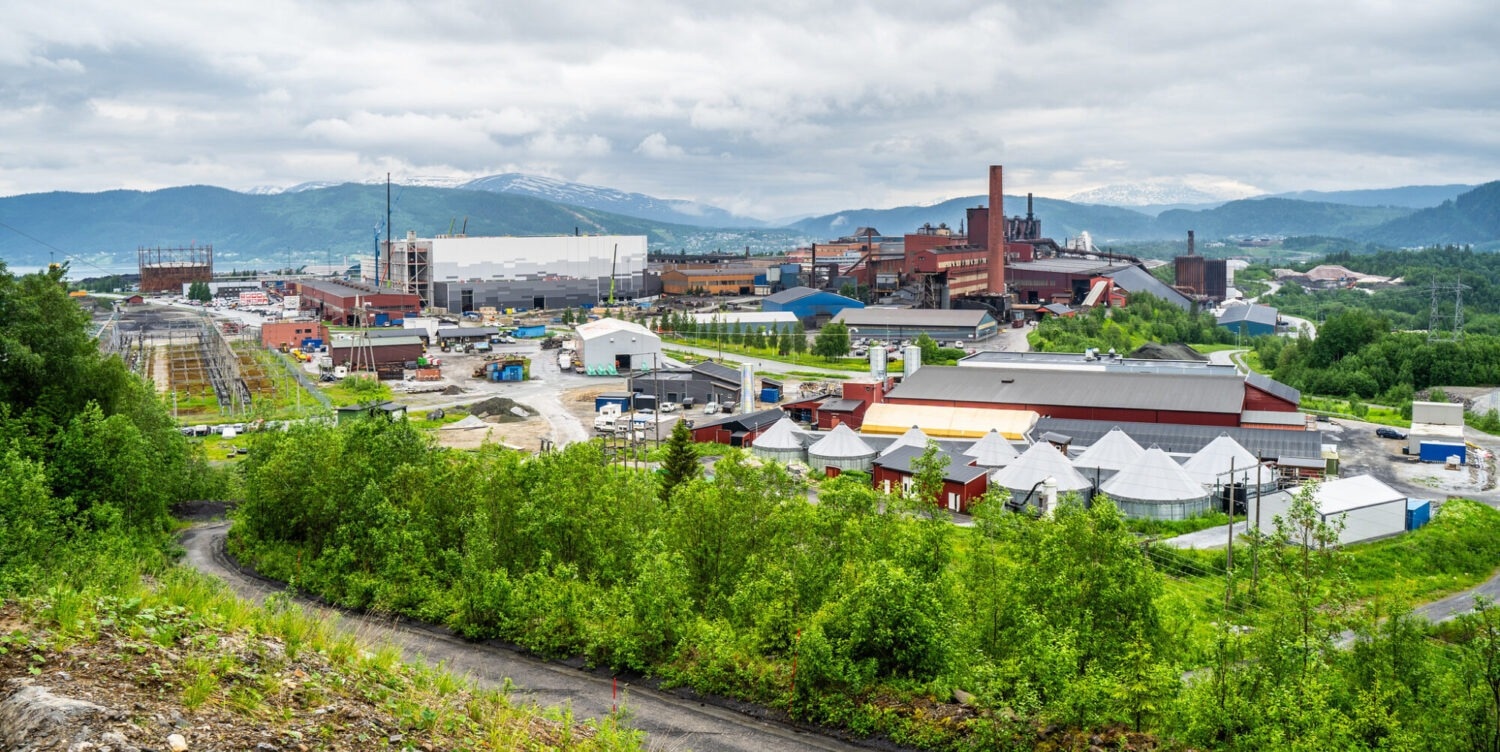According to academics, ‘industrial symbioses’ and ‘green hubs’ provide solutions to the difficulty of reaching Europe’s climate change mitigation objectives.
 Many industrial parks in Norway are currently facilitating the application of circular processes, such as here at the Mo Industrial Park in Nordland County. The brown gas holder on the left is storing carbon monoxide obtained from one of the industrial plants for reuse by other companies on the site. Image Credit: Benjamin Strøm Bøen/Mo Industripark AS
Many industrial parks in Norway are currently facilitating the application of circular processes, such as here at the Mo Industrial Park in Nordland County. The brown gas holder on the left is storing carbon monoxide obtained from one of the industrial plants for reuse by other companies on the site. Image Credit: Benjamin Strøm Bøen/Mo Industripark AS
Entire regions and their industries must start adopting circularity by exchanging their materials and energy.
Richard Heyn, Researcher, SINTEF
An ‘industrial symbiosis’ occurs when diverse industries within a particular civilization share energy, materials, or waste to maximize resource utilization. Resources that can be reused range from waste heat and coolant water to crucial raw materials.
Heyn added, “If we expand this form of collaboration to incorporate urban areas and regional businesses, we can establish what is termed an ‘industrial-urban symbiosis.”
The goal is to keep the resources in use for as long as possible, minimizing the dependence on nonrenewable energy sources and lowering CO2 emissions.
District heating systems that use waste heat from industrial plants are examples of well-known symbiotic relationships of this type. Companies that gather refractory materials from industrial operations and recycle them as new, practical goods are another example.
“Two further examples are the use of ash from combustion plants as a replacement for cement in concrete, or the use of sewage derived from a medium-sized town either as the basis for generating household electricity, or as an industrial raw material,” Heyn stated.
The goal of so-called ‘green hubs’ is to bring together industrial-urban symbioses on specific sites and at scales big enough that hundreds of tons of materials can circulate between participating companies and other organizations in society. This allows us to significantly reduce both our resource use and carbon footprint.
Towards Large-Scale Application in Europe
The EU intends to increase the number of circular green centers around Europe. This will necessitate not just the commercialization of key technology systems and their rollout across Europe, but also the formation of creative and collaborative practices among the many players involved.
This concept is central to the EU-funded initiative Hubs4Circularity.
Heyn further added, “The project intends to establish a network for the sharing of knowledge and resources, enabling participating actors to design their processes and arrive in a position where they can implement new technologies as a basis for creating new, circular value chains.”
A digital information platform that provides access to project findings, technical systems, and the exchange of best practices has been created by SINTEF and its partners as part of the Hubs4Circularity project. Based on the available data and modeling outcomes, expert groups and advisory panels will provide guidance and suggestions to the various participants.
Revolving Around the Process Industries
According to Heyn, the ideal approach for a specific hub would differ from community to community. Each location will need its own mechanism for exchanging energy and material flows.
The Hubs4Circularity initiative will help participants learn from other areas and industrial parks to determine the best solutions for them.
“Regardless of the solutions that individual regions arrive at, we want activities to revolve around the process industries. In this way, the waste or secondary materials that they generate can be ‘decontaminated’, enabling them to be reused in the manufacture of new products by other industries,” Heyn noted.
More Industrial Parks
In Norway, the industrial clusters Powered by Telemark and the Eyde Cluster, as well as the firms Herøya Industripark AS and Mo Industripark AS, are already active partners in the Hubs4Circularity initiative.
Heyn further stated, “These parks and clusters are already embracing the concept of circularity, but the project intends to expand these initiatives further and will be looking into whether additional symbioses can be exploited. We are also having conversations with Innovation Norway about the possibility of establishing a similar initiative in Vestlandet county and are in contact with other parks that may be interested.”
The goal is to draw in as many people as possible. The project researchers hope that by making information, expertise, and best practices available through the digital platform, as many companies and areas as possible would be able to participate in green hubs and embrace circularity.
Heyn concluded, “The knowledge and experience sharing aspects of the project are being designed as we speak, so we are encouraging all industries, clusters, municipal and county administrations to register on the project’s website at www.h4c-community.eu.”